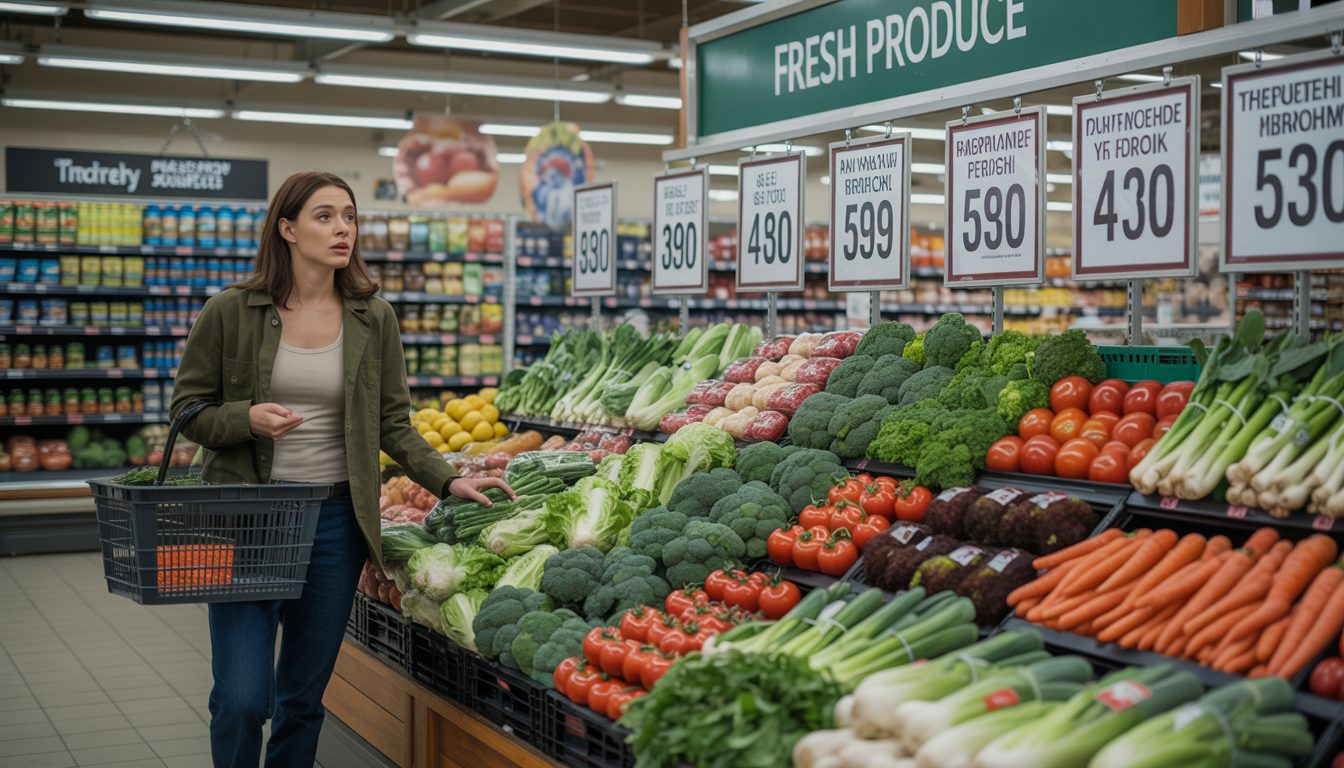A devastating combination of skyrocketing wholesale vegetable prices and a critical farm labor shortage is reshaping America’s agricultural landscape, with the U.S. Bureau of Labor Statistics reporting a staggering 38% vegetable price surge during July alone. This unprecedented increase has sent shockwaves through the food supply chain, affecting everything from restaurant menus to grocery store shelves nationwide.
The wholesale vegetable price surge represents one of the most dramatic monthly increases in agricultural commodity pricing in recent memory. According to the Bureau of Labor Statistics data, this 38% jump affects a wide range of produce, from leafy greens to root vegetables, creating ripple effects throughout the entire food distribution network.
The Perfect Storm: Labor Shortage Meets Rising Demand
The farm labor shortage stems primarily from an acute lack of agricultural workers willing and able to harvest crops during peak growing season. Farm operators across major agricultural regions report being unable to find sufficient laborers to pick vegetables at critical harvest times, leading to substantial crop losses and reduced supply.
“We’re seeing fields of perfectly good vegetables rotting because we simply don’t have enough hands to harvest them,” explains Maria Rodriguez, a farm labor coordinator in California’s Central Valley. This labor shortage has become particularly acute as traditional migrant worker patterns have shifted and domestic workers increasingly seek employment in other sectors.
The timing couldn’t be worse for consumers already grappling with inflation across multiple sectors. The 38% wholesale vegetable price surge is expected to translate into higher costs at grocery stores within weeks, as retailers adjust their pricing to reflect the new wholesale rates.
Regional Impact Varies Across Agricultural Centers
Different agricultural regions are experiencing varying degrees of impact from the farm labor shortage and subsequent vegetable price surge. California, which produces nearly half of America’s vegetables, faces some of the most severe challenges. The state’s large-scale farming operations require thousands of seasonal workers during peak harvest periods, but recruitment has become increasingly difficult.
Florida’s winter vegetable operations are already preparing for potential shortages, with growers expressing concern about securing adequate labor for the upcoming planting season. Meanwhile, smaller regional farms in the Midwest report similar challenges, though on a more localized scale.
The wholesale vegetable price surge has prompted some farms to explore mechanization as a long-term solution. However, many crops still require delicate hand-harvesting techniques that current technology cannot replicate effectively.
Economic Ripple Effects Beyond the Farm Gate
The 38% increase in wholesale vegetable prices extends far beyond agricultural communities, creating challenges for restaurants, food service companies, and ultimately consumers. Restaurant chains are already adjusting portion sizes and menu offerings to manage increased costs, while institutional food service providers struggle to maintain nutrition standards within budget constraints.
Food banks and charitable organizations report particular concern about the vegetable price surge, as fresh produce becomes increasingly expensive to source. This development threatens nutrition assistance programs that rely on donated or purchased fresh vegetables to serve vulnerable populations.
The farm labor shortage driving these price increases also highlights broader immigration and workforce policy discussions. Agricultural advocates argue that comprehensive immigration reform could help address chronic labor shortages that contribute to food price volatility. For more background on food system challenges, see our in-depth reporting here.
Industry Response and Adaptation Strategies
Agricultural industry leaders are implementing various strategies to address both the immediate farm labor shortage and long-term workforce sustainability. Some farms are offering enhanced benefits packages, improved working conditions, and higher wages to attract domestic workers, though these improvements contribute to higher operational costs reflected in wholesale prices.
Technology adoption has accelerated in response to labor challenges, with some operations investing in harvesting equipment and automated systems where feasible. However, the complexity and delicacy of vegetable harvesting means that human labor remains essential for most crops.
The vegetable price surge has also prompted discussions about supply chain resilience and the concentration of production in specific geographic regions. Some experts advocate for more distributed agricultural systems that could better withstand regional labor disruptions.
Looking ahead, agricultural economists predict that wholesale vegetable prices may remain elevated through the remainder of the growing season unless labor availability improves significantly. The seasonal nature of agricultural work means that current shortages could persist until immigration policies or domestic workforce participation patterns change substantially.
For more insights on agricultural labor trends, check out our analysis of seasonal farming employment patterns. The U.S. Department of Agriculture continues monitoring these developments as part of broader food security assessments available through their official reporting systems.
Sources
- Bureau of Labor Statistics – Producer Price Index
- USDA Press Releases
- USDA ERS – Farm Labor
- CDC – Agriculture Safety
















